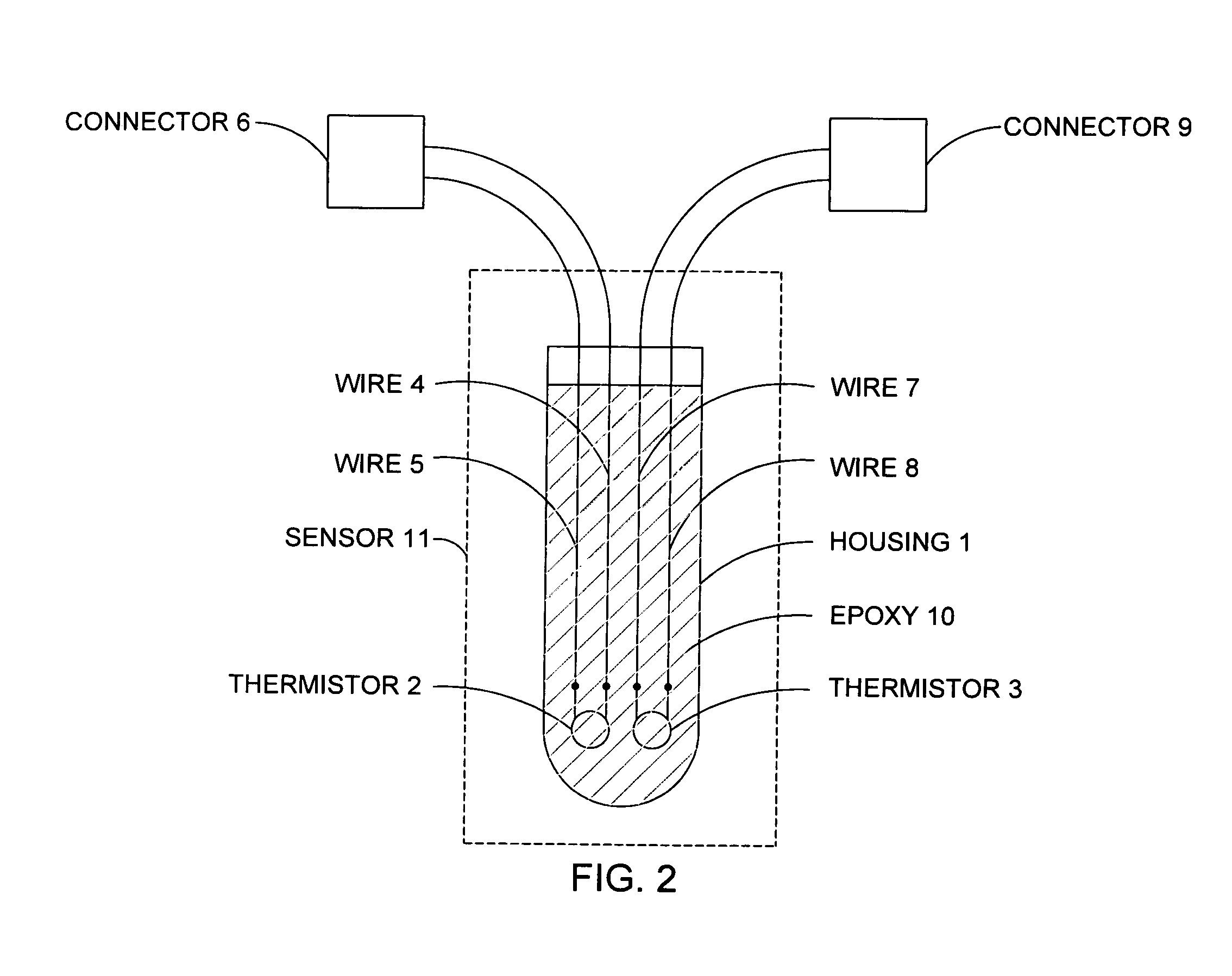Spa control with improved heater management system
a technology of management system and heater, which is applied in the direction of static/dynamic balance measurement, immersion heating arrangement, furnace, etc., can solve the problems of affecting the operation of the heater, etc., and achieves the effect of improving the control of the heater and the management system
- Summary
- Abstract
- Description
- Claims
- Application Information
AI Technical Summary
Benefits of technology
Problems solved by technology
Method used
Image
Examples
Embodiment Construction
[0022]Referring now to FIG. 1, Sensor 2 is made up of dual, solid state temperature sensing elements Thermistor 3 and Thermistor 4 connected to separate input ports of Microprocessor 1 with wires 5, 6, 7, and 8. Thermistors 3 and 4 may share a common housing means, which is placed near the heating element of a spa heater. Both thermistors are not required for the invention but are included to meet the redundancy requirements of UL 1563 concerning independent circuits to control the heater. The measurements of the two thermistors may be averaged together for the purpose of controlling the water temperature. Since the thermistors are in exactly the same location, their temperature measurements should be nearly the same. If the two thermistors report measurements that are different by a prescribed amount, the microprocessor will de-energize the heater and indicate to the user that the sensor is defective.
[0023]In another, or the same, preferred embodiment, both measurements are constan...
PUM
 Login to View More
Login to View More Abstract
Description
Claims
Application Information
 Login to View More
Login to View More - R&D
- Intellectual Property
- Life Sciences
- Materials
- Tech Scout
- Unparalleled Data Quality
- Higher Quality Content
- 60% Fewer Hallucinations
Browse by: Latest US Patents, China's latest patents, Technical Efficacy Thesaurus, Application Domain, Technology Topic, Popular Technical Reports.
© 2025 PatSnap. All rights reserved.Legal|Privacy policy|Modern Slavery Act Transparency Statement|Sitemap|About US| Contact US: help@patsnap.com



